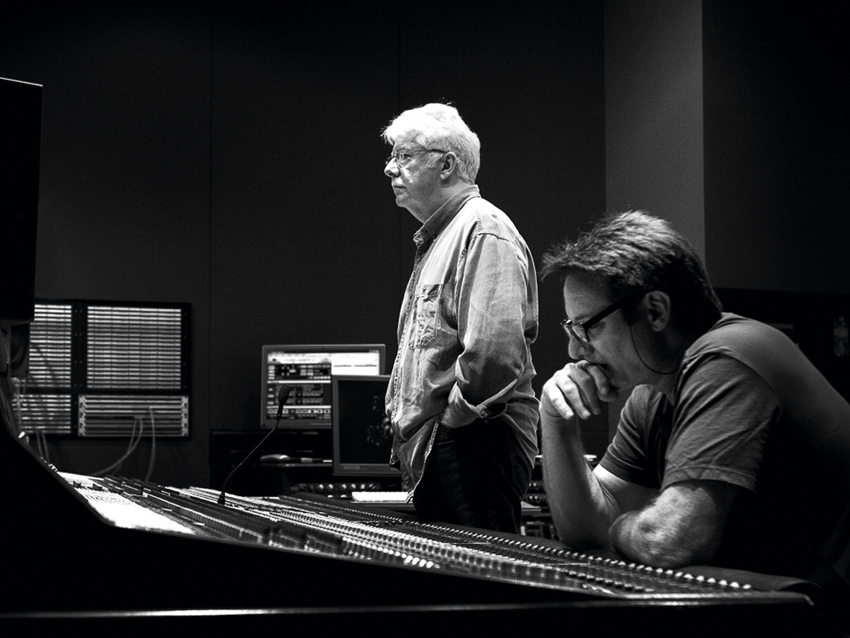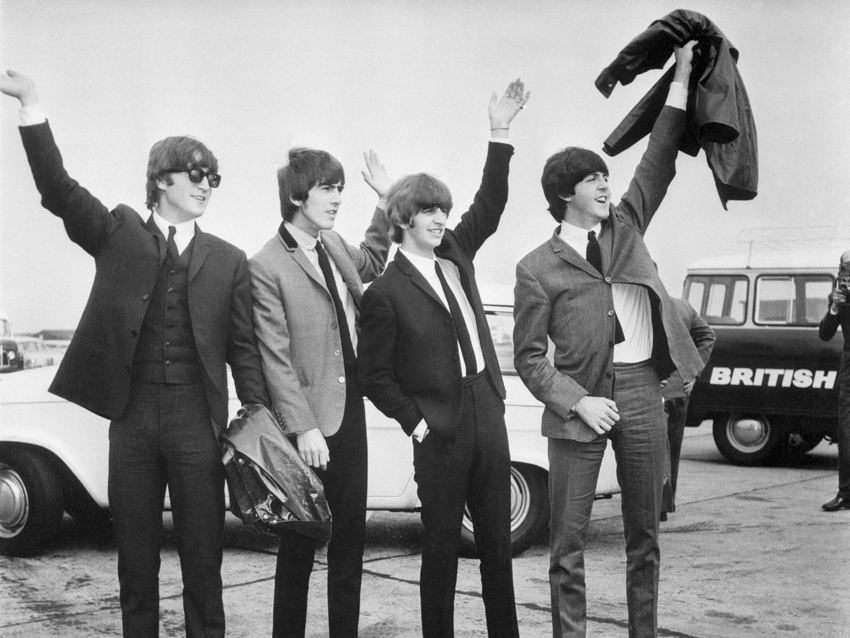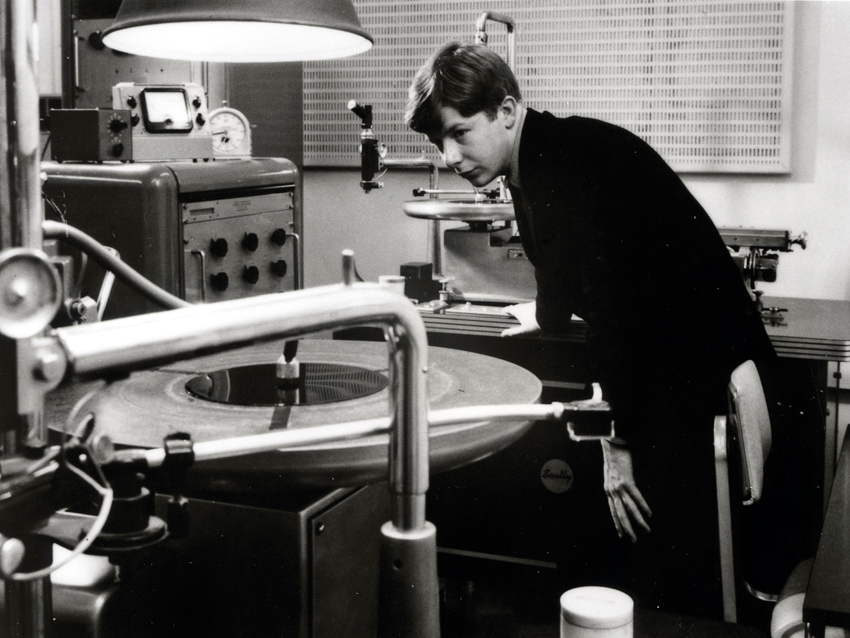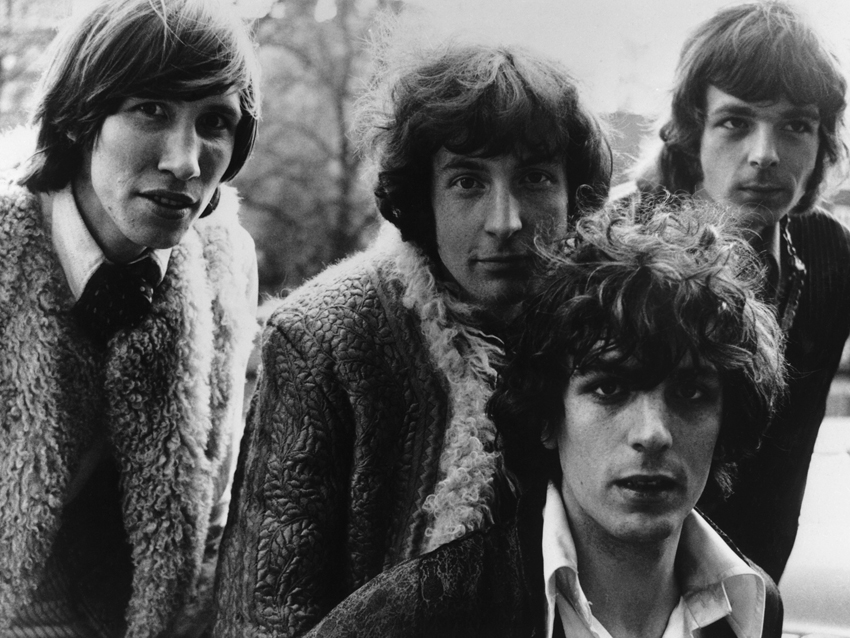Ken Scott talks Beatles, Floyd and old guitars
Abbey Road producer rolls back the years

Ken Scott talks Beatles, Floyd and old guitars
As an EMI engineer in the 1960s, Ken Scott was responsible for the sonics of some of the most loved guitar recordings in history, not least the Fab Four’s White Album.
Here, the legendary record producer looks back at his early career and talks Beatles, Floyd and why old guitars rule...
What was the environment like at EMI Studios at Abbey Road when you started there in 1964?
“It was very staid. There was a serious dress code. You had, basically, four tiers. You had the people that we called the ‘brown coats’; they were like studio roadies. They would bring in the drums for the musicians. They would set up seats for orchestras, all of that kind of thing, and they used to wear brown coats, to keep them relatively clean.
“Then you had the amp-room guys: the electronic whizzes. They had to wear a suit and tie. Because they were dealing with lots of dirty cables and damp echo chambers, and all of that kind of thing, they would wear white lab coats to keep their suits clean, which makes absolute sense, in hindsight. I used to think, ‘What the hell are they doing?’ [laughs]. Then, the engineers had to wear a suit and tie. You weren’t allowed to take your jackets off during a session. The button-pushers, the second engineers, didn’t have to wear suits, but they had to have nice dress pants, and a shirt and tie. Certainly no jeans or t-shirts back then.
“The way you progressed through your training was that you started off in the tape library, so you could learn how the studio worked, and learn what all the different jobs were within the studio. Then you’d move up to button-pusher. Before you could actually sit behind a board and do anything, you had to learn mastering, cutting. The reason behind that was that it was easier to put stuff onto tape than it was onto the final product, vinyl, because you had to be careful; there couldn’t be too much bass, because it would jump. You had to be careful of phase, because it would jump.
"So, although we didn’t like having to go through the mastering side before getting to engineer, the reasoning behind it makes so much sense. You knew what you were dealing with when you were doing a mix.”
In the early days, were you under pressure from the artists to make records sound as loud and bassy as possible, in order to compete with American releases?
“The interesting thing is it wasn’t coming from the artists. It wasn’t coming from the producers. It was coming from us. We would listen to American records, and they would appear to be so much louder. One of the engineers there, Peter Bown, spent a couple of weeks at Capital Studios in LA to try to find out what the differences were between America and England.
“He came back, and said, ‘It’s not the gear; it’s the musicians. They’ve just got a different sound that makes it easier to make it louder’. Those kinds of thing are so weird. It’s still the same today: everyone trying to get it that much louder. I think they’re doing it incorrectly by brick-walling [extreme compression]. It’s ridiculous, because it ruins the overall sound of everything.”

Meeting The Beatles
When did you first meet The Beatles?
“The first session I was on as a second engineer, button-pusher, was side two of A Hard Day’s Night [1964], the non-movie stuff. Obviously, a landmark session for me. I was petrified, but it seemed to go okay in the end, I guess! I kept working with them in that capacity more than anyone else, from that time on, through Rubber Soul.”
How experimental were they during that 1964 session?
“They’d moved on a little from the live thing. They were starting to get accustomed to four-track recording, and being able to double-track vocals easily, and put on a couple of additional things, but they hadn’t reached that point where they would tell you what kind of sound they were after.
“It was still left totally up to Norman Smith, who taught them so much. Norman was always trying to push the envelope as much as he could, within the bounds of Abbey Road management, the bounds of technology at that point, and at the point where The Beatles were.
"They hadn’t reached that point where one could go nuts with experimenting with things and getting all of these different sounds. Their progression, at that point, was still in the music, as opposed to the sound.”
When you started working with them again after Revolver and Sgt Pepper’s Lonely Hearts Club Band, you must have noticed a big difference...
“Yes, they were into doing four-track to four-tracks, so that they could put things on, and on, and on, until they got it exactly the way they wanted it. Then, on the White Album, they decided they wanted to get back to basics and more rock ’n’ roll. Even though some of the songs were very individual, and there would be times when it would just be the person that wrote the song in the studio working on it, so much was a group effort; all of them in the studio, playing at the same time. It was amazing.”
How were those raucous guitar sounds on the White Album recorded?
“It was generally pretty standard. It would be a Neumann U67 on a guitar amp, and just 18 inches to two feet away, I guess. More than anything, I think the sounds were got down in the studio, more than from us.
"I have very little memory of Clapton coming in and playing the guitar solo on While My Guitar Gently Weeps. But the one thing I do remember is Eric didn’t want it to sound like himself. He wanted it more Beatle-ish. We had to do something that we often did with The Beatles, which was flange the guitar, so it had a more strange sound, a more out-of-tune sound, less like Eric and more like The Beatles, so there were some things that we did in the control room, but a lot of it was just got from downstairs.”

Yer Blues
Wasn’t Yer Blues recorded in a side room?
“We were doing a vocal on one of George’s songs; a track called Not Guilty, that finished up not making it onto the album [it later featured on his eponymous 1979 solo album – Ed]. For whatever reason, he didn’t get the feeling out of his vocals that he wanted, on that version.
"We were trying all kinds of different things to help him feel it differently, and he wanted to try doing it in the control room, with the monitors blasting; he was after more of a live effect. “We were trying that, and on a playback John was standing by the side of me.
"I turned to him and joked, ‘The way you guys are going, you’re going to want to record in there next’, and pointed to this really small room. All it used to do was house a four-track machine, and it was next door to number two control room.
"He looked at it, and didn’t say anything until the next day, when he said, ‘Okay, we’re going to record a new number. It’s called Yer Blues, and we’re going to record it in there’, and pointed to that small room.
“We had to pack them all in, and luckily, they didn’t swing their guitars around too much; otherwise, someone might have lost their head [laughs]. It was packed so tightly, and everything was live. Even the vocal was live. It was nothing but bleed, and you had to try to blend everything together as best as possible. There wasn’t the clarity we were used to. It was a whole different ball game, but I happened to love the sound of it.”
When The Beatles described the way they wanted things to sound, were their descriptions rather abstract?
“Yes, sometimes. The one that could put it together the least was John. His descriptions could be the most esoteric. Paul would refer to other records, or say, ‘I need it brighter; I need it thinner; I need it fuller’, things like that. They all did it in their own fashion.”

Pink Floyd, Helter Skelter
What about Helter Skelter? That’s still one of the most ferocious guitar sounds ever committed to tape...
“Paul wanted to make the most distorted sound ever, so just everything was cranked. They cranked in the studio, we pulled everything down upstairs, and it just gave you what you hear on Helter Skelter.”
You also worked with Pink Floyd in the early part of their career. How did their approach contrast to that of The Beatles?
“The Beatles were all-powerful; they could do whatever they damn-well pleased. Floyd weren’t that big when I worked with them. They’d had minimal success with their first two singles, and they were going through this weird period – I’m sure there were many weird periods with Syd Barrett, but the final weird period with Syd, because it was the last single they did with him – Paint Box and Apples And Oranges.
"There was a little tension, but they couldn’t spend as much time experimenting as The Beatles. Their experimentation came in later. They slowly built up their following, and became more powerful, which led to The Dark Side Of The Moon, which put them into the same league as The Beatles.
"The Beatles tended to experiment with typical things, like they’d want a piano, but they’d want it to sound totally different. Whereas Floyd, they’d have things that would create weird noises, but they didn’t necessarily use straightforward instrumentation so much.”
Do you have any advice for recording guitars, based on your experiences?
“Go back to old guitars. I don’t like modern guitars, modern pickups. I’ve been told there are people making pickups that are more like the old ones. I have yet to find them. I tend to find there is a high shrillness to a lot of pickups these days. I would far sooner have an old guitar that has a great sound, but is very buzzy, than a new one that sounds like every other guitar, but without any hum and buzz. We’ve become too picky.
"Unless it’s just the guitar, you don’t hear all that noise, because once you get the drum kit in, and the bass in, they are creating the same kind of frequencies as any hum or buzz, so you don’t hear it so much, if at all. Don’t be picky and ruin a good guitar sound to try to get something clean.
“The other thing is: get it in the studio. Don’t fall for the whole thing of, ‘Well, we can take this, copy and paste it, and move it over’. People don’t seem to use their ears as much as their eyes these days, looking at the computer. We’ve lost the heart and soul from the music. It has to be perfect. As humans, we’re not perfect, and music has to have emotion. Emotion isn’t perfect.
“We’re reaching a point that we have to make a turnaround, otherwise music is doomed. I think that change will come. I’m a firm believer in talent, but it’s pretty bad at the moment. I liken it to before The Beatles.
"There were so many acts signed because of the way they looked, as opposed to the way they sounded. They were manufactured, and so many acts today are manufactured. Then The Beatles came along and changed everything. It’s almost like that again. We’re waiting for that next Beatles.”
Chris Vinnicombe worked with us here on the MusicRadar team from the site's initial launch way back in 2007, and also contributed to Guitarist magazine as Features Editor until 2014, as well as Total Guitar magazine, amongst others. These days he can be found at Gibson Guitars, where he is editor-in-chief.
“Every note counts and fits perfectly”: Kirk Hammett names his best Metallica solo – and no, it’s not One or Master Of Puppets
“I can write anything... Just tell me what you want. You want death metal in C? Okay, here it is. A little country and western? Reggae, blues, whatever”: Yngwie Malmsteen on classical epiphanies, modern art and why he embraces the cliff edge
“Every note counts and fits perfectly”: Kirk Hammett names his best Metallica solo – and no, it’s not One or Master Of Puppets
“I can write anything... Just tell me what you want. You want death metal in C? Okay, here it is. A little country and western? Reggae, blues, whatever”: Yngwie Malmsteen on classical epiphanies, modern art and why he embraces the cliff edge











